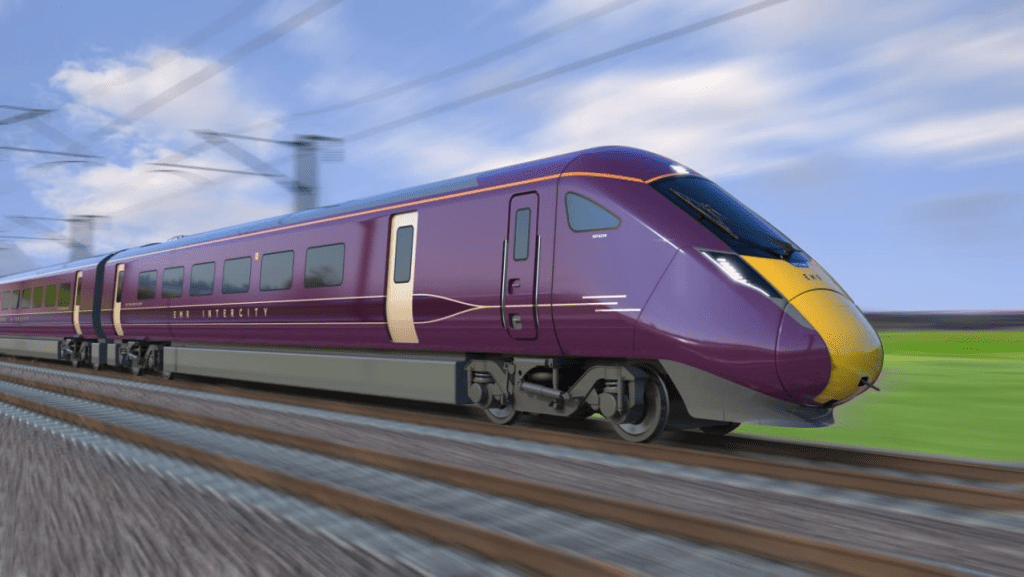If you’re a frequent train traveler, you might have heard whispers or noticed something peculiar about train toilets: they’re supposedly directly connected to the tracks. This might sound unsettling, but it’s actually been the design choice for train toilets in certain parts of the world for quite some time. The immediate question arises—if the toilets discharge waste directly onto the tracks, why do the tracks remain relatively clean? The answer is fascinating and a blend of engineering, environmental factors, and evolving technology. Let’s dive into this lesser-known side of train travel.
How Do Train Toilets Really Work?

In traditional train systems, especially in older models, train toilets use what’s known as a “direct discharge” system. In this setup, when passengers use the toilet, the waste goes directly through a pipe and onto the tracks below. Originally, this method was chosen because of its simplicity and efficiency in disposing of waste while the train is moving. At high speeds, waste would be dispersed by airflow, minimizing immediate buildup on the tracks and helping to keep the toilet relatively odor-free.
While it may seem primitive, this system worked in part because of the conditions under which trains travel. Since trains run along metal tracks at considerable speeds, the open areas under the tracks and the fast movement allowed waste to be dispersed quickly, making it less noticeable to passengers and limiting its impact on the tracks.
Why Aren’t the Tracks Dirty?
Now, if waste is discharged directly, why aren’t the tracks a mess? There are a few key reasons why you won’t find a scene of waste accumulation when looking down at the tracks from a train platform:
1. Regular Track Maintenance
Railway companies prioritize the upkeep of their tracks, with dedicated teams responsible for cleaning and maintaining these areas. The tracks and surrounding areas are regularly inspected and cleared of debris, including any waste that might have been deposited. Maintenance crews are equipped with tools specifically for track cleaning, allowing them to keep the environment around the tracks clean and safe.
2. Environmental Factors at Play
Natural elements help to manage the waste over time. Rain, wind, and sunlight all play a role in breaking down and dispersing waste on the tracks. Rainwater, for instance, can dilute waste, which, combined with the effects of sunlight and wind, aids in its decomposition. The open-air environment ensures that waste doesn’t remain concentrated in one place, helping to maintain the appearance of cleanliness on the tracks.
3. Advancements in Train Waste Disposal Technology
Modern trains have moved towards more advanced waste management systems. Sealed waste containers are now used in many trains, especially on newer models. These containers store waste securely and are emptied and cleaned once the train reaches a station equipped with the necessary disposal facilities. This prevents any waste from being discharged onto the tracks and provides a more hygienic solution for train passengers and railway staff.
In addition, new technologies are emerging that further reduce the environmental impact of train toilets. Biological toilets, for example, are capable of breaking down waste into harmless byproducts, which can then be stored until proper disposal. Many railway companies are investing in these technologies to improve hygiene and reduce the environmental footprint of train travel.
Why the Direct Discharge System Was Once Practical

Understanding the origins of the direct discharge system requires a look back at the historical context. When trains were first becoming popular, the focus was on functional and economical solutions. Direct discharge systems were easy to install, required minimal maintenance, and were sufficient for trains traveling through largely uninhabited areas where waste impact was minimal.
In addition, because trains moved quickly, the waste was dispersed almost instantly, meaning it didn’t accumulate in noticeable amounts. The tracks’ open environment and natural elements took care of the rest. However, as train travel increased in frequency and areas around railways became more populated, the need for more hygienic and environmentally friendly solutions became apparent.
Growing Environmental Awareness and Innovations in Train Toilets
As environmental awareness has increased over the years, so has the push for sustainable and hygienic train toilet designs. Today, more rail systems are implementing closed-loop systems where waste is contained and disposed of properly, without impacting the tracks or the surrounding environment. Some trains, especially those in Europe and Japan, now feature vacuum toilets similar to those on airplanes, which store waste in a tank to be emptied at specific facilities.
In addition to storage-based solutions, innovations in biological waste disposal are coming into play. For instance, bioreactor toilets are designed to convert waste into harmless substances, making it possible to either store or discharge it with minimal environmental impact. These technologies reflect the commitment to not only enhance passenger comfort but also uphold environmental responsibility.
Social Media Reactions and Public Perception

In the digital age, the direct discharge system of train toilets has sparked curiosity and debate on social media. Many travelers express surprise or discomfort upon learning about it, while others appreciate the practical considerations that originally led to this design choice. Comments range from fascination with the system’s simplicity to calls for modernization in regions that still use it.
While some passengers may feel uncomfortable about the idea, it’s important to consider the historical and practical context. As technological advancements continue to shape the future of train travel, we can expect more efficient and environmentally friendly solutions to replace direct discharge systems.
The Future of Train Toilets: Toward Sustainability and Passenger Comfort
The future of train toilet design is likely to focus on two main aspects: environmental sustainability and passenger comfort. Closed-loop systems, biological waste breakdown, and advanced filtration systems are becoming standard in modern trains. Here’s what we can expect moving forward:
1. Widespread Adoption of Closed Systems
Many countries are phasing out direct discharge toilets in favor of closed waste systems. These systems collect and store waste, which can then be disposed of at designated stations. As this technology becomes more affordable, it is expected that more trains worldwide will adopt it.
2. Implementation of Eco-Friendly Technology

Biological toilets and chemical treatments that break down waste in an eco-friendly manner are on the rise. These technologies minimize the environmental impact and allow for more sustainable train operations. As train companies adopt these solutions, passengers can enjoy a cleaner and more environmentally conscious travel experience.
3. Enhanced Focus on Passenger Experience
Future train toilet designs will not only focus on functionality but also on improving the passenger experience. From reducing unpleasant odors to providing greater privacy and cleanliness, the railway industry is looking for ways to make train travel more comfortable. In addition to technological upgrades, design improvements, such as better ventilation and sanitation measures, are likely to become standard.
Conclusion: Understanding the Journey of Train Toilets
The design of train toilets has come a long way from the days of direct discharge systems. While these systems served a purpose in the past, modern advances are paving the way for cleaner, safer, and more sustainable solutions. Thanks to improved waste management technologies, travelers can look forward to a future where train toilets contribute positively to both the passenger experience and the environment.
In the meantime, the tracks remain clean due to a combination of natural factors, regular maintenance, and evolving technology. As train travel continues to evolve, so too will the methods used to ensure that both passengers and the environment are respected. Next time you board a train, you can appreciate the journey of this everyday feature and look forward to a more sustainable future for rail travel.


